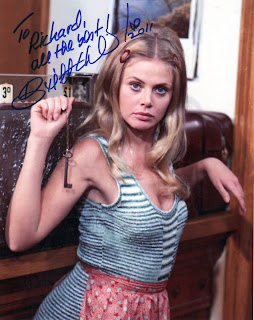Yesterday I retrieved a couple pieces of trim
from above my garage for a minor repair task that didn’t require matching
pieces. My dad was a builder, so he stashed up there numerous leftover
mismatched doorknobs, window screens, paneling boards, and so forth, some now more
than 50 years old. While rummaging about, I also noticed the two wine presses
also stored up there, one from each set of grandparents.
All my grandparents experienced Prohibition
while in their 20s and early 30s, and both sets lived on farms, so it is not
surprising that they bypassed the law by fermenting their own wine, using not
only grapes but apples, elderberry, blackberries, dandelions and whatever else
was handy. (Making wine at home requires patience but it isn’t really
difficult: juice, water, sugar, and yeast are the basic ingredients; different
recipes have different proportions, and additives such as honey are always an
option.) Left to ferment naturally, wine maxes out at about 12% alcohol; beyond
that it kills off its own yeast, so the process is self-limiting. Nevertheless,
so far as I know, my grandparents didn’t supplement the table wine with moonshine,
which is just as well. My dad remembered from his childhood repeatedly seeing
neighbors’ barns and houses burn in the distance with the characteristic blue
flames of distillery accidents.
I’ll choose to assume the wine was just for
medicinal purposes. Studies as early as 1900 revealed the value of moderate
alcohol consumption in reducing heart disease – studies dismissed by
Prohibitionists as hokum but recently reconfirmed. In fact, moderate
consumption is presently tied to a multitude of health benefits. One Health
site (See http://www2.potsdam.edu/hansondj/AlcoholAndHealth.html
) poses and answers the following question:
“Why drink to reduce the risk of heart
disease? Wouldn't eating a good diet, exercising, and losing weight do the same
thing? No, it wouldn't. The moderate consumption of alcohol appears to be more
effective than most other lifestyle changes that are used to lower the risk of
heart and other diseases.”
Of course, a good diet and exercise are
beneficial too, but, apparently, if you are going to pick only one intervention,
booze is best, provided you keep the amount down to one or two drinks per day.
(1 drink = 1 beer = 1 glass of wine = 1 shot of 80-proof liquor.)
Though scientific studies to this effect are
fairly recent, even the ancients were well aware of the health benefits of
wine. They knew it made water safe to drink and that it reduced infections in
open wounds and surgeries. It also was a common ingredient in medicines –
sometimes the only ingredient.
The foremost medical authority of the ancient
world was Galen (129 AD – c.200). Today he is known mostly for what he got
wrong, but, given that Roman law hampered him by forbidding the dissection of
human cadavers, he got a surprising amount right, including his analysis of
voluntary muscle control via a brain-centered nervous system. (Aristotle, by
contrast, thought the brain merely cooled the blood; outside the Capital
Beltway, this is untrue.) In addition to being an author of medical texts, he
was a skilled hands-on surgeon noted for his successful cataract operations.
Galen also was the personal physician of the emperor Marcus Aurelius. Nearly
all the medicines he prescribed were based on wine. Just to be sure the emperor
got the very best medicine, Galen “in the execution of my duty” thoroughly
sampled the wines in Marcus Aurelius’ huge wine cellar: “I kept on until I
found a wine without a trace of bitterness.” It was a 20-year-old Falernian
white aged to a golden yellow; you still can buy Falerno bianco, by the way, if
you wish. Unfortunately, it wasn’t enough. Or maybe it was too much. When
Marcus fell ill with the plague (probably smallpox) that badly weakened the
legions and the empire at a critical moment in Rome’s history, Galen had him
consume nothing but bowls of his medicine (mostly that 20-year-old Falernian)
for a week. Marcus Aurelius did what he was told and died. Maybe he would have
died then anyway, but one can’t help wondering if being bombed for a week really
was helpful to his natural defenses.
And there we have the problem: that word
“moderate.” I’m sure there are people in the world who drink one or two glasses
every day, but never more than two. I never met any, but they probably exist. (Perhaps
it is more common outside of the United States
and northern Europe .) Everyone I’ve ever known
has drunk substantially less or substantially more, and at a far less even
pace. Let’s be clear: a good average won’t do. 7 – 14 drinks on Saturday do not
confer the same benefits as one or two drinks daily during the week. Binge
drinking is defined as 5 or more drinks per occasion, and the effects are
deleterious, not healthful. Those of my
acquaintance who drink every day also binge drink with frequency, typically
every weekend. Those who don’t drink daily either binge drink occasionally,
scarcely drink at all, or are actual teetotalers. (Disclosure: in my 20s sporadic
over-indulgence was something of a hobby; since age 30, I’ve been close enough to being a teetotaler to share all the health risks.)
Don’t get me wrong. I have no quarrel with the
vine. Alcohol is deeply embedded in human culture, and has been since before
the dawn of civilization. I don’t want Prohibition back, and I think the reset
of the drinking age to 21 in the US UK and Australia
To anyone who can keep to the prescribed daily
regimen, you have my respect. However, I know myself not to be one of you, so I
think I’ll leave the wine presses where they are – or, if I remove them, it
will be only to display them as antiques next to my two kerosene heaters that
haven’t been lit since 1934.


